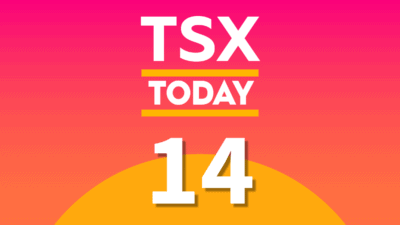When it comes to investing, safety and high returns are often considered to be at odds with each other. Investors have had the risk-return spectrum drilled into their heads from the first finance course they took in university: consequently, simply equalling the market average has become a goal for many.
It’s true that buying index funds is an easy way to protect yourself from losses and meet the market average. However, not all index funds and ETFs are created equal. For one thing, there are different indexes for ETFs to track. For another, funds can vary in terms of their fee structure and distributions. And finally, funds that track foreign countries’ indexes can be influenced by currency fluctuations and other concerns.
Which brings us to the main question: beating the TSX average.
If you’re a believer in the random walk theory, you probably don’t believe that it’s possible to beat the TSX average by picking individual TSX stocks. However, that doesn’t mean you can’t outperform the TSX. By picking funds that track other indexes or stronger sectors within the TSX, you may well be able to outperform while still enjoying the benefits of low risk investing. With that in mind, here are two ETFs that stand a solid chance of beating the TSX average over the next five years.
Vanguard S&P 500 Index Fund (TSX:VFV)
The Vanguard S&P 500 Index Fund is one of the most popular funds in the world. Striving to merely meet the S&P 500 average with low fees, it has spared many investors the fate of investing in under-performing, high fee mutual funds. To buy the Vanguard S&P 500 Index Fund under its U.S. ticker symbol–VOO–you need to convert your currency to U.S. dollars. However, you can buy the exact same fund on the TSX as “VFV” and spare yourself the currency headaches.
Why is this fund a good bet to outperform the TSX? Quite simply, the S&P 500 has delivered a much better return than the TSX over time, and while past performance doesn’t necessarily indicate future performance, we’re talking about an extremely long-term track record here: since 2006, the S&P 500 has beaten the TSX by a factor of three to one.
Horizons S&P/TSX 60 ETF (TSX:HXT)
Let’s say you’re a Canadian investor who wants to keep their money in TSX equities while also beating the TSX average. In this case, you’d probably want to skip VFV: although it’s a solid bet to beat the TSX, it’s ultimately a U.S. play (despite trading on the TSX).
Here’s where the Horizons S&P/TSX 60 ETF comes into play. This ETF tracks the S&P/TSX 60 Index, a TSX subset that has slightly outperformed the TSX over a five-year time frame. The index tracks only the largest TSX stocks, so it excludes a lot of the mid-cap energy stocks that have been dragging the TSX index down lately. Buying HXT to beat the TSX is not quite as certain a strategy as buying VFV. If the oil price rises massively. then the previously mentioned energy stocks could become assets rather than liabilities, resulting in the TSX Composite beating its TSX 60 sub-index. However, the TSX 60 has a long-term track record of beating the S&P/TSX Composite Index, which dates back to well before the 2014 oil price crash.
 Stock Up Sale
Stock Up Sale







